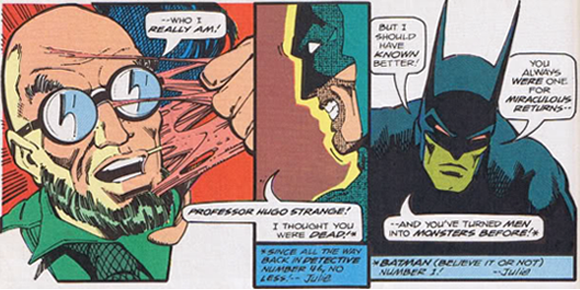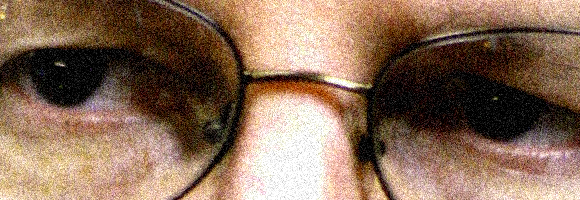
Since the late 1970s, when I first read the story arc ‘Dark Detective I’ (Detective Comics 469-476), aptly named ‘Strange Apparitions’ for a reprint, arch-villain ↑Professor Hugo Strange is my favourite Batman-enemy. ‘Strange Apparitions’ just had everything, the Joker, the Penguin, and with Silver St. Cloud one of the most beautiful spouses Bruce Wayne ever had. Most of the story arc was pencilled by ↑Marshall Rogers (1950-2007), besides ↑Jim Aparo (1932-2005) until today my favourite Batman-penciller. Hilary Goldstein ↑writes at IGN:
There is a common misconception among comic-book readers that Batman books were terrible until Frank Miller came along in the mid-’80s. That’s not true. In fact, the late ’70s were good for the Dark Knight. One of the strongest Detective Comics runs of all time came with Steve Englehart at the helm with both Walter Simonson and later Marshall Rogers handling the pencil work. Batman: Strange Apparitions collects one of my favorite runs of any Batman book and features a definitive moment in Joker lore.
↑Steve Englehart (*1947) himself, who wrote the story arc, ↑says about ‘Dark Detective I’ aka ‘Strange Apparitions:’
From the moment this eight-issue run appeared, it was dubbed the “Definitive Batman.” It’s been reprinted in its entirety twice in English (and often in other languages; the example below is Finnish), and individual stories have appeared four “Greatest” collections. This is not a complete showcase of the reprints by any means.
This series made The Batman someone an adult could appreciate, introduced his most famous woman, Silver St. Cloud, and showcased his most memorable encounter with the Joker in “The Laughing Fish.” At the same time, it reestablished the dark, pulp roots of the character; I even asked for the panel borders to be thicker, to get more black on the page. It defined a man, a city, and an ambiance. […]
In short, these eight issues define the modern Batman franchise, and from that, the modern superhero film franchise.

Ah, those are the moments when I wish I would have become a comic book artist, as the original masterplan saw it, instead of having turned anthropologist. All the more as today the technical means have empowered the medium of the computergame to lift the interpretation of comic book material to unprecedented heights.
‘↑Batman: Arkham Asylum‘ (Rocksteady Studios 2009) already blew my feeling mind back to the 1970s, really. To me B:AA is one of the most perfect Batman-interpretations. The game only has one grave drawback—it isn’t moddable, a problem which surfaces again and again with the owners of big intellectual property franchises. The geeks in the scene managed to change Batman’s dress, for example back to its classic 1970s comics look, but the mod only works with the demo-version, not with the full out-of-the-box game.
The new trailer [YouTube embedded version below, high definition and download ↑available at gametrailers] for ‘↑Batman: Arkham City‘ (Rocksteady Studios 2011) by Blur Studio reveals that Strange is the mastermind behind the evil ongoings, driving the story of ↵Arkham further. :-)
Now I am looking very much forward to B:AC, which is slated for release in October—imagine my shock when I first read that it would come for consoles only. Then it would have suffered the same fate as ‘↑Alan Wake,’ which in the end came to the Xbox only, which is an absolute shame. Oh, how I despise you marketing geniusses.







